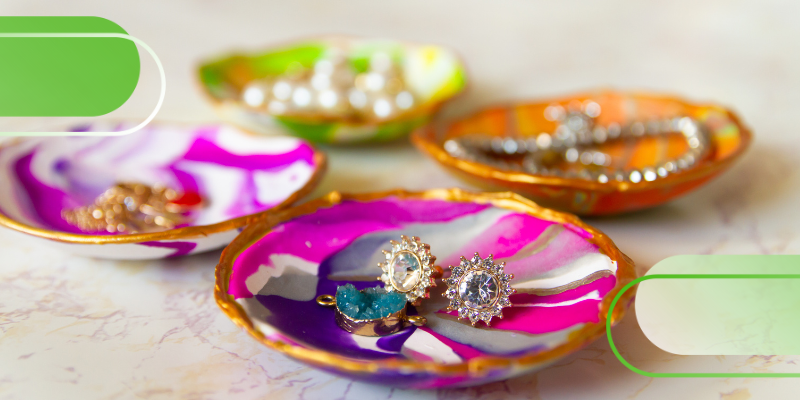As delicate items, understanding how to ship jewelry to various locations is essential in safeguarding your items during transit. Jewelry is fragile and must be packaged with the utmost care to ensure profitable sales and customer satisfaction. This blog will discuss the best practices for how to ship jewelry both internationally and domestically. Join us as we discuss everything retailers need to know!
How to ship jewelry: Safeguarding precious items
Shipping jewelry requires meticulous attention to detail. From initially boxing your items to packaging them with care, there are many best practices to adhere to as a retailer. In the realm of eCommerce, some businesses offer a wide array of products, including jewelry alongside apparel or household items, while others specialize solely in jewelry. Regardless of your business model, mastering the art of shipping these delicate items is crucial, whether you’re a seasoned veteran or just stepping into the industry.
Here are our top 10 retailer best practices for shipping jewelry.
- Pay Attention to the Details
Whether you’re shipping luxurious diamonds or elegant costume jewelry, prioritizing the safety of your items is paramount. Our first best practice begins with the initial boxing process before shipping. Why is this step so crucial? Jewelry, by its very nature, demands meticulous attention to detail to prevent tangling or damage. Imagine a customer’s disappointment opening their jewelry box only to find their new purchase tangled or broken. To avoid such mishaps, ensure all clasps are securely fastened and necklaces or bracelets are neatly arranged within felt loops or appropriately sized boxes.
Remember to include certificates within the box for high-end jewelry pieces to authenticate their value. Investing in high-quality packaging not only safeguards your items but also elevates your brand image. Opting for premium shipping boxes reinforces your commitment to excellence, leaving a lasting impression on customers.
There are also cost-efficient ways to save money and enhance the presentation of your jewelry. Consider packaging your pieces in felt or plush bags with ties. Not only do these pouches keep the jewelry secure during transit, but they also exude a sense of luxury. Additionally, they serve as keepsakes, providing customers a convenient way to store their jewelry while traveling. By prioritizing careful packaging, retailers safeguard their items and enhance the overall customer experience, leaving a positive and lasting impression.
- Package with Care
Now for the important part: jewelry packaging. Securing your jewelry items is of the utmost importance, particularly if you are shipping fine jewelry. Shipping valuable items like jewelry must be handled with precaution and care. Here are some tips on how to pack jewelry.
- Use sturdy, crush-resistant boxes to provide optimal protection during transit and secure with packing tape.
- Utilize padded envelopes, bubble mailers or small boxes for smaller pieces to prevent shifting and potential damage. Consider wrapping in plastic bags or mailers to prevent any water damage.
- Consider using materials such as bubble wrap, foam inserts, or tissue paper to create more cushioning around the jewelry.
Remember, the better the packaging, the safer your items will be.
- Properly Label Jewelry Shipments
When shipping jewelry, it’s vital to clearly label the package as “Fragile” to alert handlers of the delicate nature of the contents. Consider adding extra labels when shipping jewelry in a larger box to cover all ends. Further, include a packing slip or invoice inside the shipping box with details of the enclosed items for reference. If shipping internationally, ensure compliance with customs regulations and accurately declare the contents and value of the jewelry.
- Gather All Necessary Customs Documents
If you’re new to shipping jewelry, you may be surprised to find that many countries have certain restrictions and regulations regarding the transportation of rough diamonds. Rough diamonds may be defined as fine or luxury jewelry, which is any jewelry that is made from precious metals such as gold, silver, or platinum. When shipping this type of jewelry, many retailers are required to provide a certificate of authentication as well as other customs documents. Since any parcel that enters a country is subject to scrutiny by the local customs authorities, it’s vital to include this documentation and properly declare your items.
- Declare Your Goods with Customs Agents
According to the U.S Customs and Border Protection, The Patriot Act has specific requirements for dealers of gems and precious metals. Shippers must provide the declared value of any commercial imports of diamonds, jewelry, pearls, and precious and semi-precious stones with a value of $2,500 or more. While importing these items for commercial purposes may not require a license, specific forms may be required, such as CBP Form 301 and a Harmonized System Identification Number (HS code). To know which documents are needed for an export shipment, consult with a customs agent, freight forwarder, or an experienced shipping provider.
- Know The Kimberley Process Certification Scheme (KPCS)
To address the problem of diamonds being used to fund conflicts and human rights abuses, many countries, including the United States, agreed to start The Kimberley Process Certification Scheme (KPCS). Enacted in 2002, this scheme aims to distinguish the difference between conflict diamonds and legitimate ones to prevent the flow of illegitimate trade. This is important because countries that participate in this scheme agree not to import or export rough diamonds to non-participants and ensure that diamond shipments between participating countries follow the rules of the KPCS.
Retailers must ensure that the diamonds they source and sell comply with Kimberley Process standards. This involves verifying that diamonds are accompanied by Kimberley Process certificates, which certify them as conflict-free. Retailers must also adhere to national and international laws and regulations governing the import and export of diamonds. Failure to comply with Kimberley Process requirements could result in legal consequences, including fines or penalties.
- Understand Jewelry Taxes and Tariffs
Certain countries prohibit the transportation of jewelry for various reasons from adhering to cultural values or for economic reasons. As a result, tariffs may apply when shipping jewelry to certain countries, significantly raising your shipping costs. This is particularly true if the jewelry is mounted with metal. A tariff, often referred to as a duty or tax, is a fee imposed by a government on goods imported from other countries. Tariffs serve as a trade barrier aimed at controlling the influx of foreign goods. They help safeguard domestic industries from overseas competition and adjust prices to support local industries’ competitiveness. Since no country possesses all the resources needed for self-sufficiency, trade is essential, leading to varying tariff rates across different industries and nations.
- Choose Quality Shipping with Tracking
While there are different shipping speeds and methods to choose from, selecting an option with more features can greatly benefit retailers shipping jewelry. For example, if a retailer is shipping fine jewelry from the United States to Germany, the best option would be an express option with international package tracking and, ideally, other additional features like shipping insurance (more on this next). Opting for fast shipping ensures that the jewelry arrives promptly, allowing customers to receive their purchases when they need them most. Since many customers are purchasing jewelry for special occasions like birthdays or anniversaries, swift delivery is the standard best practice.
Further, the importance of advanced package tracking can never be understated when it comes to high-value items. Customers can track their jewelry at every checkpoint, and given the right shipping provider, at every stop across the country.
More importantly, fast shipping contributes to a positive customer experience by meeting or exceeding delivery expectations. Prompt delivery of jewelry enhances customer satisfaction and increases the likelihood of repeat purchases and positive reviews.
- Purchase Shipping Insurance
Higher cost shipping options like expedited, express or first class air often come with additional security features such as tracking and insurance. This shipping option provides reassurance that your valuable jewelry is being closely monitored and protected throughout transit, reducing the risk of loss or theft.
- Select the Right Shipping Partner
Shipping delicate and high-value items can be intimidating. By working with an experienced partner familiar with common shipping protocols and international requirements, retailers can safeguard their jewelry shipments, ensuring a positive and successful shipping experience, no matter where the customer is located.
Shipping Jewelry with ePost Global
From selecting the right packaging materials and securing jewelry properly to choosing the appropriate shipping methods and providing excellent customer service, every step in the jewelry shipping process plays a crucial role in maintaining the integrity of the jewelry and enhancing the overall customer experience. That’s why you need an experienced partner by your side.
At ePost Global, we’re here to be your partners in shipping fashion and costume jewelry — although we don’t ship high-value jewelry items. Our teams streamline the shipping process, so you can focus on other aspects of your business without worrying about your jewelry being packaged incorrectly or risk non-compliance when shipping overseas. While other notable platforms like eBay and Etsy are experts at shipping jewelry, our error-free process is simple:
- Our team at ePost Global creates a shipping label for your shipments while considering package dimensions, weight, and correct addresses in the process. We take extra precautions for sensitive and fragile items.
- We also sort through the best domestic or international routes for your packages to optimize costs and transit times using best-in-line integrations.
- We then provide a single tracking number to help you maximize visibility on your shipments.
We do all of this while also providing consistent support throughout the entire process. Unlike traditional shipping providers like FedEx, DHL, or UPS, we’re a shipping company that takes your needs and requirements into account for the specific goods you are shipping. This allows us to cater our services to your specifications and craft a personalized approach to shipping your items. We work with foreign postal networks, regional final mile carriers, and USPS amongst many of our partners, ensuring every product is delivered on time and with the utmost care.
We provide a range of flexible shipping services tailored to your exact needs. Whether you require Expedited Parcel, Priority Parcel with Delivery Confirmation, ePacket, or USPS Priority Mail, we offer transparent costs, adaptable delivery schedules, competitive rates, and expertise in international shipping customs forms.
Mastering the art of jewelry shipping is essential for retailers to uphold their reputation, satisfy customers, and thrive in the competitive market. By implementing the best practices outlined in this guide, retailers can ensure the safe and secure transit of their delicate jewelry items.
Ready to learn how to ship jewelry with excellence? Contact us today! We’ll provide a step-by-step analysis of our process and answer any common FAQs you may have.




